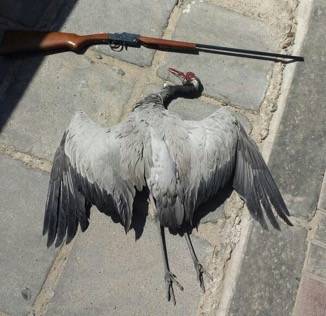
OSME held its annual Summer Meeting on 4 July at the BTO Headquarters in Thetford. The theme of the day was illegal bird killing in the OSME region. Five excellent speakers gave a range of talks covering monitoring, data collection, education and awareness-raising around this intractable issue. Nick Moran did a great job chairing the day at short notice due to the unexpected absence of OSME Chairman, Rob Sheldon.
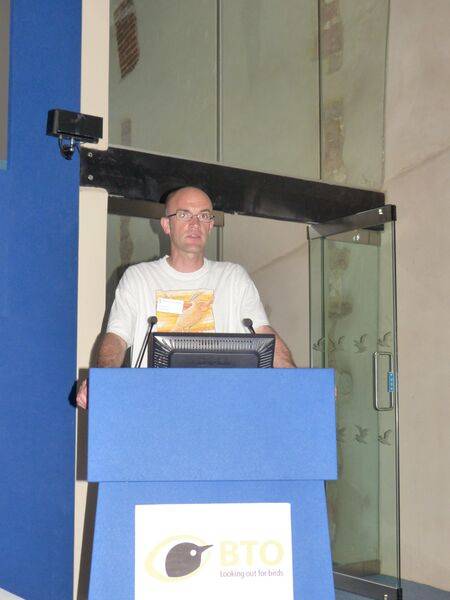
The first speaker of the day was the BTO Director, Andy Clements, who gave an insightful overview of the value of monitoring and how the resulting data can be used to form evidence-based conservation actions. Citizen Science is at the core of the work of the BTO. The various BTO-led monitoring programmes rely on more than 40,000 volunteers to collect data and when individual records from birdwatchers are collated, the value of those data soars. By adding any bird records, from anywhere and from any time, to BirdTrack, patterns can emerge that become immensely valuable. This was highlighted using the recent example of BirdTrack data on Common Buzzard numbers being used in a case of poisoning by a Norfolk gamekeeper. To date more than 4.7 million records have been added to BirdTrack, and the system is global, with a large number of records from the OSME region.
Tracking technology is key to understanding how birds migrate and to identify specific routes and key sites. Data from Common Cuckoo tracking in Belarus shows that many individuals migrate through the OSME region (where they are at risk of illegal killing) en route to Mozambique, and satellite tracking of Sociable Lapwings by the RSPB has highlighted the importance of countries such as Syria and Saudi Arabia for both migration and wintering.
A crucial message from Andy’s talk was don’t keep you bird records just in a notebook: data can be incredibly valuable when made available and shared.
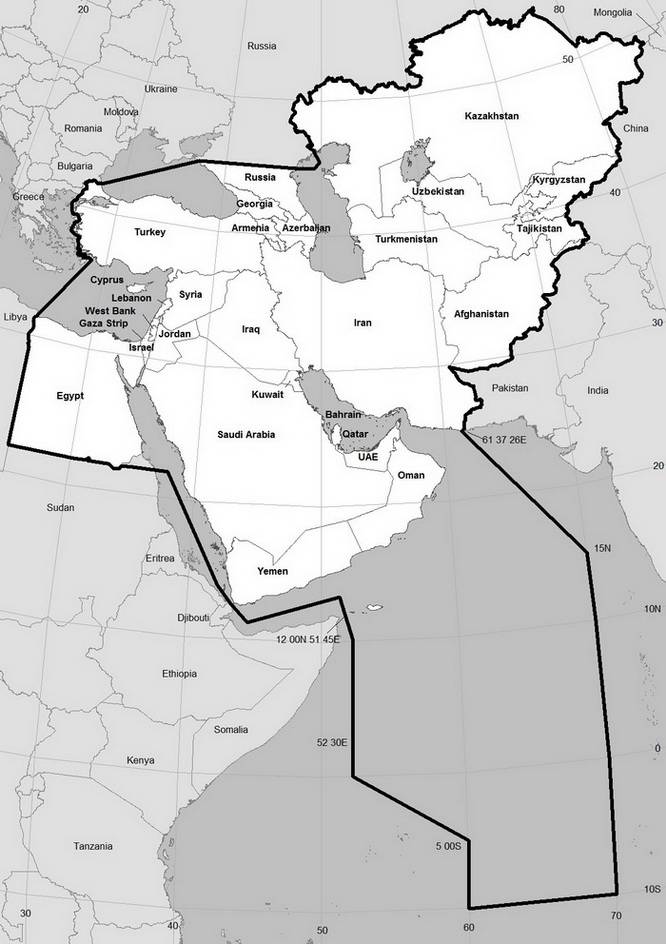
Anne-Laure Brochet of BirdLife International built on the theme of data during her talk on a review of illegal bird killing in the Mediterranean. Over the last 9 months BirdLife International have been collating and reviewing data and seeking expert opinion to try and understand the extent of illegal bird killing in that area. A number of countries from the OSME region are included in the review including Cyprus, Egypt, Israel, Jordan, Lebanon, Palestine, Syria, Georgia and Turkey. The results presented were preliminary but will be finalised in time for release at the UK Birdfair in August. It is clear that more detailed monitoring of the numbers of birds illegally killed is urgently required to enable targeted conservation actions to be implemented.
A key element of tackling illegal bird killing is inspiring people about the amazing birds that can be found in the OSME region. Richard Porter, co-author of the excellent field guide to the Birds Of The Middle East outlined a project between BirdLife International, OSME, RSPB and Bloomsbury Publishing to produce an Arabic version of the second edition. Richard unveiled the new cover of the book consisting of two Blue-cheeked Bee-eaters, the original of which will be used by OSME to raise funds to help with the publication of the field guide and smartphone app. It is envisaged that the book will be launched in spring 2016. OSME will be developing a fundraising campaign in the coming weeks, ready to launch at the Birdfair in August.
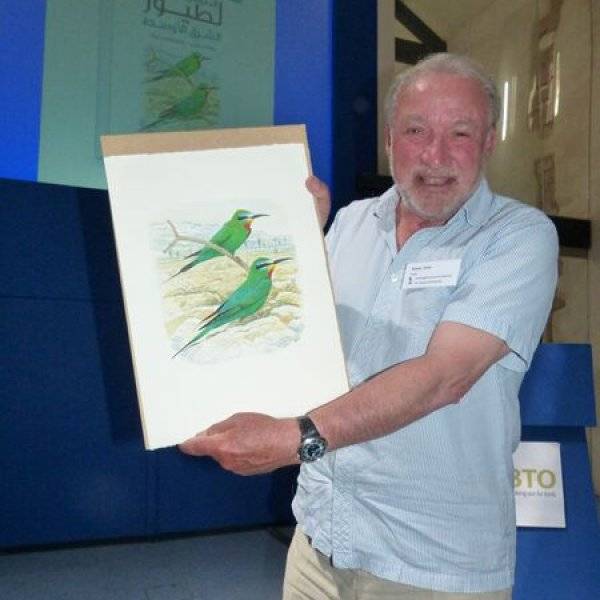
After lunch Oliver Reville gave a powerful talk on addressing illegal hunting at Batumi, Georgia, through education and awareness-raising. Oliver volunteered for the project in autumn 2014 and was captivated by the huge numbers of raptors that migrate through the Batumi bottleneck. More than 1,384,548 raptors were counted last autumn, including an incredible 100,000 European Honey Buzzards in a 9hour period, and an amazing 230,000 Steppe Buzzards in a further 8hour period! There is a tradition of hunting in the Batumi area and large numbers of birds are at risk from unsustainable practices. Monitoring the numbers killed was a big focus of the work last autumn. 164 birds were actually seen shot and falling to the ground, and remains of 442 individuals were recorded. A total of 48 different species are known to have been killed. A rough estimate suggests that approximately 2,250 birds were shot in 2014 autumn season, although this is likely to be an underestimate. From discussions with hunters it is clear most are unaware of the Georgian hunting laws, nor appreciate the importance of the area as a migration hotspot. The aim of the awareness raising work is to involve the Georgian people, governmental officials, local administrative officers, local children, general public, local women and hunters.
Local staff of the Batumi Raptor Count visit schools and teach children about the amazing birds that migrate through their area.The Batumi raptor migration is increasingly being seen as a destination for birdwatching holidays, and offers significant eco-tourism opportunities to local people who can provide home-stays and accommodation for visiting birdwatchers and tourists.
The OSME Conservation and Research Fund has supported the work of the Batumi Raptor Count and you can read more about their excellent work here

At very short notice, Julia Newth of the Wildfowl and Wetlands Trust, gave a fascinating talk on reducing illegal shooting of Berwick’s Swans in Arctic Russia. This project is just getting underway and is seeking to develop ideas and initiatives working with local communities in Arctic Russia
Although Bewick’s Swans are legally protected throughout their 1,500 mile migration route, approximately 35% of live swans x-rayed between 2009–2013 carried fragments of shotgun pellets.
Although this project is being undertaken outside the OSME region, it was clear that many of the problems of combatting illegal killing are similar. The need to develop partnerships with hunters will be fundamental to addressing illegal shooting across the flyway.
The final presentation of the day was from Simon Wotton of the RSPB on monitoring illegal trapping in Cyprus. The problem of illegal killing of birds on Cyprus is well known and has been the focus of conservation efforts for many years. Much of the trapping is for the local dish –ambelopoula – which translates as Eurasian Blackcap – but is actually made up of about 20 species of songbird.
Traditional trapping methods are used which includes lime sticks, mist nets and a range of lures, all of which are indiscriminate. A total of 153 different species–that’s 40% of birds on the Cyprus checklist–have been recorded as illegally killed. Of these almost 80 are listed as threatened according to the IUCN Red-list.
Since 2002 systematic monitoring has been implemented to assess trapping levels; although there was a decrease in activity at around the time Cyprus joined the EU, an alarming increase has taken place since then, and particularly in the last few years.
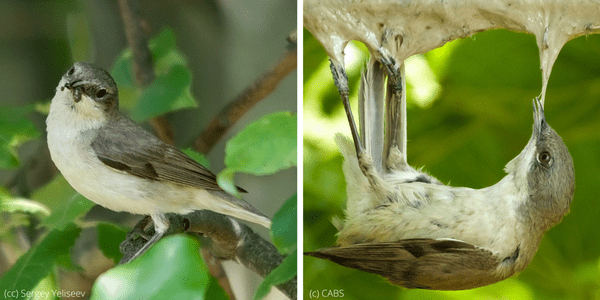
The day left most in the audience feeling a mixture of horror and hope. Horror at the illegal, indiscriminate bird killing still very much entrenched in many countries in the OSME region – and beyond. Hope that with so many NGOs, scientists, conservationists and amateur birdwatchers collaborating, collating their data and communicating about the issues to the wider public, positive change will come.
illegal bird killing OSME Summer Meeting
